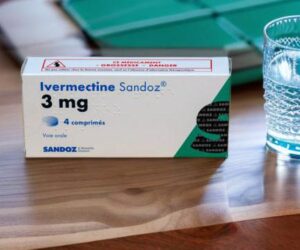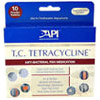Overview
Chloramphenicol, a broad-spectrum antibiotic, is synthesized or derived from the bacterium Streptomyces venezuelae. It operates by inhibiting protein synthesis in bacteria, hence impeding their growth. Renowned for its effectiveness against a variety of microorganisms, Chloramphenicol is used in the treatment of serious infections, particularly when other antibiotics are ineffective or contraindicated.
Indications
Chloramphenicol is indicated for treating severe infections caused by susceptible strains of bacteria. These infections include meningitis, typhoid fever, rickettsial diseases, and ocular infections. It may also be employed when less potent antibiotics are inappropriate, such as with strains resistant to other antimicrobial agents.
Dosage Administration
Dosing regimens for Chloramphenicol vary depending on the severity and type of infection, as well as the patient’s age, weight, and kidney function. It is available in oral, topical, and injectable forms. Medical professionals must calculate doses meticulously, taking into account factors like renal sufficiency to avoid toxicity. Consistent blood level monitoring is suggested to ensure therapeutic levels are maintained while minimizing toxicity risks.
Contraindications
Chloramphenicol should not be administered to patients with a history of Chloramphenicol-associated bone marrow suppression, hypersensitivity to the drug, or patients unable to metabolize the drug effectively. Furthermore, it is contraindicated in those with severe liver or kidney impairment without careful dose adjustment and monitoring.
Warnings
Use of Chloramphenicol warrants caution. It is associated with serious, sometimes fatal blood dyscrasias, including aplastic anemia, hypoplastic anemia, thrombocytopenia, and granulocytopenia. Monitoring blood counts is essential throughout therapy. Prolonged or repeated use may result in secondary infections, including fungal or bacterial superinfections. Caution is also advised in treating gray syndrome in neonates—a condition characterized by abdominal distention, vomiting, and circulatory collapse due to the immature hepatic metabolism in newborns.
Adverse Effects
Chloramphenicol toxicity can manifest in a variety of ways, from gastrointestinal disturbances like nausea and vomiting to more grave conditions such as optic and peripheral neuropathy. Patients may also exhibit allergic responses in the form of rashes or hypersensitivity reactions. Due to its potential for hematologic side effects, routine blood monitoring is recommended to detect any adverse hematologic reactions early.
Drug Interactions
Concurrent administration of Chloramphenicol with other medications that depress bone marrow function or alter hematology could amplify toxicity. Chloramphenicol may inhibit the metabolism of drugs metabolized by hepatic enzymes, extending the half-life and effect of drugs such as phenytoin and warfarin. Patients should inform healthcare providers of all medications they are taking to assess for potential interactions.
Specific Populations
Special populations, such as pregnant and nursing mothers, as well as pediatric and geriatric patients, require adjusted dosing and monitoring. Chloramphenicol passes the placental barrier and is detected in breast milk, exposing the fetus or nursing infant to potential adverse effects. Pediatric patients, particularly neonates, are at an elevated risk of developing “gray baby syndrome” and therefore need appropriately adjusted doses and monitoring of serum levels. Elderly patients may necessitate dose adjustments due to decreased drug clearance.
Overdose
An overdose of Chloramphenicol can be life-threatening. Signs of overdose include vomiting, confusion, and a decrease in body temperature. Should an overdose occur, immediate medical attention is necessary. Treatment is symptomatic and supportive, as there is no specific antidote for Chloramphenicol overdose. Hemodialysis may help in the removal of the drug in severe cases.
Supply and Storage
Chloramphenicol is supplied in various formulations, including oral suspensions, capsules, eye drops, and injectables. Conditions for storage differ depending on the formulation but generally require a cool, dry place away from light and moisture. As for injections, refrigeration may be necessary. Healthcare professionals need to counsel patients on the correct storage of Chloramphenicol to preserve its effectiveness.
Patient Counseling
Patients must be apprised of the importance of adhering to the full course of Chloramphenicol treatment, even if symptoms improve. They should be educated about possible side effects and instructed to seek medical advice if they observe signs of toxicity, such as unusual bleeding, bruising, or infection. Advising patients on the potential interactions with other medications, as well as the risks associated with alcohol or specific foods during treatment, is also crucial. Finally, patients must comprehend the potential risks related to the use of Chloramphenicol in infants and during pregnancy and breastfeeding.





Reviews
There are no reviews yet.